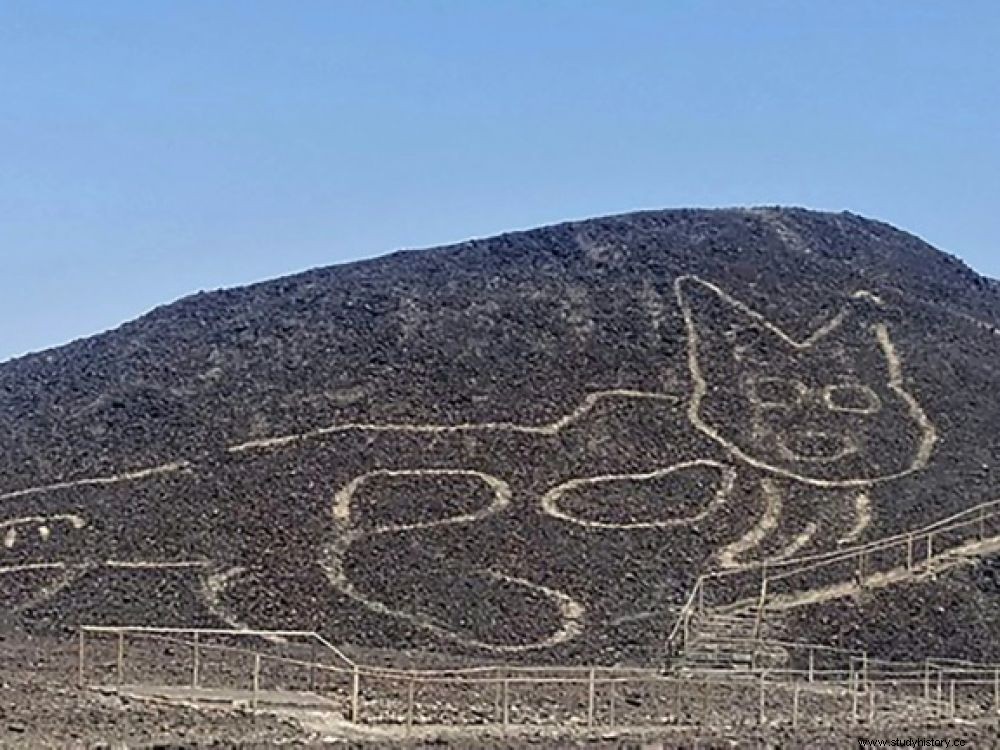This geoglyph of a pointy-eared cat about 37 meters long was recently brought out of oblivion, its lines having been spotted by a drone flyby.

A new geoglyph, more than 2,000 years old and representing a feline, photographed on October 15, 2020 in Nazca
A new geoglyph, more than 2,000 years old and representing a feline, was recently discovered in Peru which will reopen access in November to these mysterious giant drawings drawn on the ground in the Nazca desert. This geoglyph of a pointy-eared cat about 37 meters long was recently brought out of oblivion, its lines having been spotted by a drone flyby.
The Nazca geoglyphs were discovered almost a century ago
"The silhouette was barely visible, it was on the verge of disappearing due to its location, on a fairly steep slope, and the effects of natural erosion" , said the Peruvian Ministry of Culture. A group of archaeologists cleaned and redrew the contours of the geoglyph located on the hillside and whose lines are 30 and 40 centimeters wide.
Classified as a World Heritage Site, the Nazca geoglyphs, discovered almost a century ago in southern Peru, are geometric figures representing around 70 animals and plants, visible only from the sky, which has fueled the over the years one of the greatest enigmas on the planet.
"Representations of felines are frequent in the iconography of Paracas society"
According to its stylistic characteristics, the recently unearthed geoglyph dates from the end of the Paracas period, an ancient pre-Inca civilization (-800 BC). "Representations of felines of this type are frequent in the iconography of ceramics and textiles of the Paracas society" , explained the ministry.
On November 10, Peru will reopen the thousand-year-old Nazca Lines site, one of its main tourist attractions, which has been closed for seven months due to the pandemic. Located in an area of 750 km2 in the desert, about 350 km south of Lima, these lines had, according to archaeologists, a ceremonial function.
The best known of these geoglyphs are a 135 meter wingspan monkey, spiral tail, a spider (46 meters long), a hummingbird (66 meters from wing to wing) or a giant bird, long 300 meters and 54 wide. They were engraved by the Nazca, a people established in the area from 200 to 700 AD, and would therefore be later than the Paracas geoglyphs.
